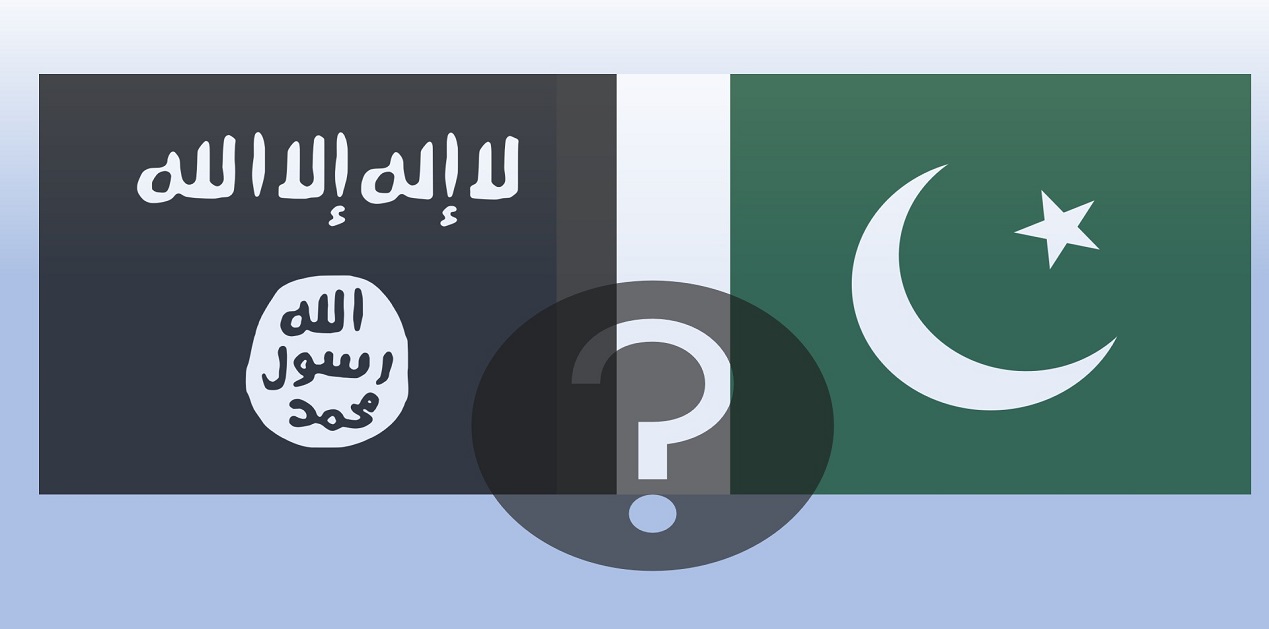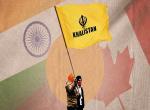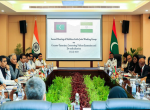Amid the ongoing global panic caused by Coronavirus (aka Covid-19), the Sikh and Hindu communities in Kabul were subjected to the mortifying experience of the killing of their loved ones, not from Covid-19 pandemic, but the “ugly monster” of terrorism. In the morning of 25 March 2020, shooters and suicide bombers of Islamic State Khorasan Province1 (IS-KP) attacked a Sikh temple (Gurdwara)— Gurdwara Har Rai Sahib located in the Afghan capital. Around 200 people were inside the Gurdwara in the hours-long siege of the attack.2 According to a media report, at least 25 people, including women and children, were killed, and eight others were wounded in the attack.3 The IS-KP, which is a branch of Islamic State, active in Afghanistan and Pakistan, claimed responsibility for the attack4 and revealed the name of Abu Khalid al-Hindi as the perpetrator of the dastardly act.
The Attack
Around 07 am (Afghan time) on 25 March 2020, three terrorists belonging/owing allegiance to IS-KP, threw grenades at the entrance of Gurdwara Har Rai Sahib in Shor Bazaar area of Kabul. After entering the complex, the terrorists entered the Dharamsala (a building meant for the stay of devotees) where around 200 people were gathered for worship. Inside the Dharamsala, the terrorists started indiscriminate shooting. According to an eye witness, the attackers went from room to room and shot at who so ever they encountered. “One of the attackers was dressed in the uniform of Afghan police and shot at the guard of the temple before killing others”, claimed the witness.5
Responding promptly to the attack, the Afghan Security Forces (including Afghan police) and the British troops (deployed as a part of international allied forces) battled the perpetrators for six hours before killing all of them and evacuating the devotees from the buildings. The Afghan Ministry of Interior tweeted to confirm that 80 people who were stranded inside the Gurdwara complex, were rescued by the security forces, including the General Command of Police Special Units (GCPSU).6 The Islamic State’s Arabic language weekly newsletter—Al-Naba (in the issue No. 227 on page 5), released on 27 March 2020, while claiming responsibility for the attack, justified it as an act of retaliation against alleged oppression on the Muslims in Kashmir.
For the record, it may be mentioned that the Taliban quickly denied its involvement in the incident. That seems acceptable since representatives of the Taliban and Afghan officials had scheduled meetings on the same day, to initiate a “prisoner release programme” from the first week of April 2020. The prisoner release programme, it may be recalled, was an agreed precondition under the US-Taliban peace talks.7
While analysing the event reports in the media, a doubt emerged on the number of terrorists involved in the incident. Most news reports suggested that three or four attackers, including a suicide bomber, were involved in this attack.8 However, in a news report published in The Telegraph, claimed that it was a ‘lone-wolf’ attack carried out by a lone IS gunman.9 The newsletter confirmed that the attack was carried out by their own “Caliphate Soldier”— Abu Khalid al-Hindi, who alone killed 50 “Sikhs and Hindu polytheists” and wounded dozens. The claim of a lone-wolf action, however, was not substantiated in any other report.
Who is Abu Khalid al-Hindi?
As mentioned above, the IS newsletter— Al-Naba, on 27 March, attributed the incident to their “caliphate soldier”— Abu Khalid al-Hindi and also published the image below.
The caption below the image, in Arabic, is translated as:10
“Brother (Abu Khalid al-Hindi) - Accepted by God - The executor of the indulging attack on the Temple of The Polytheists in Kabul.”
The description of the attack was title as “In retaliation for the Muslims of Kashmir; Dozens of Sikhs, Hindus and police in Kabul”. The narrative portrayed Abu Khalid al-Hindi as a soldier who displayed heroism by “planting two explosives nearby the Gurdwara before barging inside and killing polytheists with his machine gun and grenades until the security forces killed him”.
The family of the attacker [Khalid al-Hindi] came forward and identified him as Mohammed Muhsin, a native of Trikkarippur in Kasargod district in Kerala who had reportedly left for Dubai in search for a job in 2018 and had travelled to IS-controlled territory in eastern Afghanistan. On 27 March, Muhsin’s mother received a message over Telegram application from one of Mushin’s associates in IS. The message read that their son had attained martyrdom in the recent Kabul Gurdwara attack.11 However, his mother deleted the Telegram message out of fear.
It is learnt that Mohammad Muhsin was not part of the group of 21 members from Kasargod and Malappuram (Kerala) which had travelled to Afghanistan in 2016. However, a report in the Outlook India claimed that the “real identity” of Abu Khalid al-Hindi was Mohammed Sajid Kuthirulmmal, a 30 years-old shopkeeper from Padne village of Kasargod district in Kerala. He had left for Afghanistan with 14 others in 2016 with intentions to join IS-KP.12 One would have to await the results of the investigations by the Afghan authorities to determine whether he was Mohammad Muhsin or Mohammed Sajid Kuthirulmmal. Since ‘both’ these individuals belong to Kasargod, the ‘mystery’ around Abu Khalid al-Hindi’s real identity shall get resolved soon.
The “Real” Conspirator of Gurdwara Attack
As stated earlier, soon after the attack on the same day, i.e. 25 March, the Islamic State (IS), through its official agency the Amaq, had claimed responsibility of the attack. However, the description of the attack and the identity of the attacker (Abu Khalid al-Hindi) were provided in IS’s weekly newsletter Al-Naba on 27 March. In the prevailing confusion, another story emerged suggesting that Indian and Western intelligence agencies had ‘substantial shred of evidence’ that Pakistan’s ISI (Inter-Services Intelligence) had conspired the attack through terrorists belonging to the Haqqani Network and Lashkar-e-Taiba (LeT).13 These reports argued that the Gurdwara in Shor Bazaar was selected due to its high visibility, being just around 2.7 km from the Bazaar and the Embassy of India in Kabul.
In a special operation carried out on 04 April, the Afghan security forces arrested the mastermind of the Gurudwara attack— Mawlawi Abdullah, a Pakistani national and the Emir of the IS-KP, and other 19 operatives of the group.14 Earlier, the official twitter handle of Afghanistan’s National Directorate of Security (NDS) tweeted: “Abdollah Orakzai, the famous Aslam Farooqi, along with three others, the head of Khorasan department Qari Zahid and Saifullah famous as Abu Talha, had been seized by the special units of national security”.15
Hinting towards the theory of Pakistan’s involvement in the attack, the initial interrogation of Mawlawi (aks Aslam Farooqi) revealed that the IS-KP has strong ties with “regional intelligence agencies”, pointing to Pakistan’s ISI. While other vital information may come out in due course from the interrogation of Mawlawi, especially the nexus between the IS-KP and other jihadi groups supported by Pakistan, it is interesting to note that on April 09, 2020, Pakistan Foreign Office summoned the Afghan Ambassador in Islamabad demanding that the detained IS-KP chief Aslam Farooqi Mawlawi be handed over to Pakistan as he was ‘involved in anti-Pakistan activities in Afghanistan’. 16 One wonders whether Pakistan (read ISI) is only trying to “get its man back before he spills the beans”!
As a brief backgrounder it may be mentioned here that in a report compiled in 2018, United Nations Security Council (UNSC) of the IS and al-Qaeda Monitoring Committee, Mawlawi Abdullah aka Mawlawi Aslam Farooqi aka Abdullah Orakzai, (43 years) was appointed as Emir or leader of IS-KP which was having an operational strength of 3,500-4,000 in Afghanistan.17 Since then, the strength of IS-KP terrorists has been significantly reduced as it received hard-hits both from the Taliban and US-Afghan counter-terrorism operations in Nangarhar, Kunar, and Nuristan provinces where IS-KP used to have a significant presence. In November 2019, in a US-led military campaign, the IS-KP terrorists were dislodged from their stronghold in Eastern Afghanistan, mainly in Nangarhar.18
According to yet another report (Indian Express on 28 March), Mawlawi Abdullah was a member of Pakistan-based and supported terror group— Lashkar-e-Taiba (LeT) since 2004. It is well-noted that IS-KP is a cluster of several jihadist groups, including factions/defectors from the Taliban and is Pakistan-supported, despite differences in aims. 19 If such an assumption is taken as valid, IS-KP is only a “front face” and Pakistan could well have, from behind the scene, orchestrated the Gurudwara attack with support from the Haqqani and LeT networks. This assumption leads to a question— Why would Pakistan get involved in any conspiracy to attack a Gurudwara in Kabul at a time when it had activated the Kartarpur Corridor in an attempt to woo the Sikh community through the initiative and was aiming to revive the Khalistan movement in India?
Explaining the animosity of IS-KP against Sikhs and Hindus in Afghanistan, an eminent academician—Antonio Guistozzi rejected the above mentioned UNSC report of 2018. He claimed that Mawlawi Abdullah was appointed Emir by the military Shura of IS-KP on 22 May 2018, and two months later, in July 2018, IS-KP attacked a convoy of Sikhs and Hindus in Jalalabad in which 19 people were killed, including 13 Sikhs.20 Also, IS-KP seems to be a “multinational” group to which Pashtun fighters of Tehrik-e-Taliban Pakistan (TTP) and LeT had pledged allegiance under the then leadership of Abu Bakr al-Baghdadi.
Options and Projections
The Kabul Gurudwara attack was not the first instance of members of the Sikhs and Hindus communities in Afghanistan being targeted. In December 2016, Nirmohan Singh—an Afghan Sikh was killed by unidentified gunmen in Kunduz.21 In 2018, IS claimed a suicide bombing in which 19 people were killed, including a Sikh candidate who had planned to contest the Afghanistan parliamentary elections in October 2018.22 Earlier, during the US-led ‘War on Terror’ in Afghanistan in 2001, many Hindus and Sikhs had fled the country. Due to recurring attacks and persecutions, over the years, around 99 per cent of Hindus and Sikhs have left Afghanistan. In the 1980s, the total population of Hindus and Sikhs was 220,000; in 1990s following the rise of Taliban, their numbers sharply dropped to 15,000; and by 2016, the numbers further came down to only 1,350.23
As mentioned earlier, viewed from the prism of IS’s, now crumbling, vision of spreading the Caliphate in the Indian Subcontinent, the possibility of a nexus between IS-KP and Pakistan-supported Islamist terror groups might sound a bit unrealistic, but it would be unwise to entirely ruled it out. It may be recalled that speaking at a US Senate Committee hearing in October 2017, US Marine Corps General Joseph Dunford had pointed out that Pakistan’s Inter-Services Intelligence Directorate had “strong-ties” with terrorist groups. 24 In the context of the US-Taliban peace agreement that could lead to the eventual rehabilitation of the Taliban into the future power structure in Afghanistan, a nexus among other non-Taliban groups such as IS-KP, TTP, LeT and others, could be, if so needed by the ISI, into a potentially potent terror entity against India, not only in Kashmir but beyond. Even in Afghanistan, such an entity could be useful as a counterweight to the Taliban, should they ever try to act too independent of Rawalpindi.
Endnotes
- Note: IS-KP lays a claim to an Emirate comprising parts of Iran, three Central Asian Republics, Afghanistan, Pakistan, parts of Kashmir (India), and Xinjiang Province in China.
- Storm Gifford. “Gunmen attack Sikh religious complex in Kabul, says Afghan official”, Daily Press, 25 March 2020, Available from: https://www.dailypress.com/ny-sikh-religious-complex-attacked-20200326-bgzxv42qe5c23oktq6sflldriu-story.html
- “Kabul Sikh Temple Siege: Dozens killed in attack claimed by ISIL”, Al Jazeera, 25 March 2020, Available from: https://www.aljazeera.com/news/2020/03/gunmen-attack-sikh-religious-complex-kabul-interior-ministry-200325044905522.html
- “IS Claims Raid on Sikh Temple in Kabul”, SITE Intelligence Group, 25 March 2020, Available from: https://ent.siteintelgroup.com/Statements/is-claims-raid-on-sikh-temple-in-kabul.html
- “Kabul Sikh Temple Siege: Dozens killed in attack claimed by ISIL”, Al Jazeera.
- Ministry of Interior (@moiafghanistan). 2020. “Ministry of Interior Affairs Strongly Condemns the Terrorist Attack on Worshippers in Kabul”, Twitter, 25 March 2020, 06:31 PM, Available from: https://twitter.com/moiafghanistan/status/1242798811363381248
- Emma Graham-Harrison. “Afghanistan: dozens killed in attack on Kabul Sikh temple”, The Guardian, 25 March 2020, Available from: https://www.theguardian.com/world/2020/mar/25/afghanistan-dozens-killed-in-attack-on-kabul-sikh-temple
- Emma Graham-Harrison. “Afghanistan: dozens killed in attack on Kabul Sikh temple”, The Guardian, 25 March 2020, Available from: https://www.theguardian.com/world/2020/mar/25/afghanistan-dozens-killed-in-attack-on-kabul-sikh-temple ; Storm Gifford. “Gunman attack Sikh religious complex in Kabul, says Afghan official”, Daily Press ; “Kabul Sikh Temple Siege: Dozens killed in attack claimed by ISIL”, Al Jazeera; HT Correspondent. “25 killed in Kabul gurdwara attack; Islamic State claims responsibility”, Hindustan Times, 25 March 2020, Available from: https://www.hindustantimes.com/world-news/25-killed-in-kabul-gurdwara-attack-islamic-state-claims-responsibility/story-qMhKalWLFt3GnjJpjPOdRN.html
- Reuters Agency and Associated Press. “25 killed as Islamic State gunman takes hostages in Kabul Sikh Temple”, The Telegraph, 25 March 2020, Available from: https://www.telegraph.co.uk/news/2020/03/25/sikh-worshippers-trapped-gunmen-suicide-bombers-storm-kabul/
- Bing Translator and Google Translator applications were used to translate the caption from Arabic script.
- Deeptiman Tiwary. “Kabul Gurdwara attacker from Kerala, left for Afghanistan in 2018”, The Indian Express, 28 March 2020, Available from: https://indianexpress.com/article/india/kabul-gurdwara-attacker-kerala-mohammed-muhsin-6335210/
- IANS. “IS terrorist involved in attack on Sikhs in Kabul was Kerala shopkeeper”, Outlook India, 27 March 2020, Available from: https://www.outlookindia.com/newsscroll/is-terrorist-involved-in-attack-on-sikhs-in-kabul-was-kerala-shopkeeper-ians-exclusive/1782004
- Shishir Gupta. “In Kabul gurdwara attack, India was real target; Islamic State just a front: Intel”, Hindustan Times, 26 March 2020, Available from: https://www.hindustantimes.com/india-news/in-kabul-gurdwara-attack-india-was-real-target-islamic-state-just-a-front-intel/story-CUieYCQRwiUeA2mWHw9n7H.html
- Shishir Gupta. “Islamic State Khorasan chief Farooqui, who plotted Kabul gurdwara attack, arrested”, Hindustan Times, 04 April 2020, Available from: https://www.hindustantimes.com/world-news/islamic-state-khorasan-chief-farooqui-who-plotted-kabul-gurdwara-attack-arrested/story-mOuvLV9FNfTwmwPh9yYuEK.html
- NDS Afghanistan (@NDSAfghanistan). 2020. “Abdollah Orakzai, the famous Aslam Farooqi, along with three others #داعش The head of Khorasan department was Qari Zahid and Saifullah famous in Abu Talha. #پاکستاني Together they have seized special units of national security.”, Twitter, 05 April 2020, 10:18 AM, Available from: https://twitter.com/NDSAfghanistan/status/1246660919444353026
- AP. “Pakistan seeks extradition of IS leader from Afghanistan”, The Times of India, 10 April 2020, Available from: https://timesofindia.indiatimes.com/world/pakistan/pakistan-seeks-extradition-of-is-leader-from-afghanistan/articleshow/75082168.cms
- United Nations Security Council. “Resolutions 1267 (1999), 1989 (2011) and 2253 (2015)” S/2018/705, 27 July 2018, Available from: https://undocs.org/S/2018/705
- Clayton Thomas. “Al-Qaeda and Islamic State Affiliates in Afghanistan”, US Congressional Research Service, 31 January 2020, Available from: https://fas.org/sgp/crs/row/IF10604.pdf
- Nirupama Subramaniam. “IS-Khorasan, which attacked Kabul gurdwara, is led by ex-Lashkar man”, The Indian Express, 28 March 2020, Available from: https://indianexpress.com/article/india/is-khorasan-kabul-gurdwara-ex-lashkar-man-6335034/
- Nirupama Subramaniam. “IS-Khorasan, which attacked Kabul gurdwara, is led by ex-Lashkar man”, The Indian Express, 28 March 2020, Available from: https://indianexpress.com/article/india/is-khorasan-kabul-gurdwara-ex-lashkar-man-6335034/
- Ruchi Kumar. “The decline of Afghanistan’s Hindu and Sikh communities”, Al Jazeera, 01 January 2017, Available from: https://www.aljazeera.com/indepth/features/2016/12/decline-afghanistan-hindu-sikh-communities-161225082540860.html?utm_source=website&utm_medium=article_page&utm_campaign=read_more_links
- “Afghanistan blast: Sikhs among 19 dead in Jalalabad suicide attack”, BBC News, 01 July 2018, Available from: https://www.bbc.com/news/world-asia-44677823
- “Nearly 99% of Hindus, Sikhs left Afghanistan in last three decades”, Tolo News 20 June 2016, Available from: https://tolonews.com/afghanistan/nearly-99-hindus-sikhs-left-afghanistan-last-three-decades
- Anurag Sharma. 2019. The Islamic State foreign fighter phenomenon and the jihadi threat to India. PhD thesis, Ireland: Dublin City University, Available from: http://doras.dcu.ie/22558/ ; Idrees Ali and Phil Steward, “Mattis says will try to work with Pakistan ‘one more time’”, Reuters, 03 October 2017, Available from: https://www.reuters.com/article/us-usa-pakistan-military/mattis-says-will-try-to-work-with-pakistan-one-more-time-idUSKCN1C825S
(The paper is the author’s individual scholastic articulation. The author certifies that the article/paper is original in content, unpublished and it has not been submitted for publication/web upload elsewhere, and that the facts and figures quoted are duly referenced, as needed, and are believed to be correct). (The paper does not necessarily represent the organisational stance... More >>











Post new comment